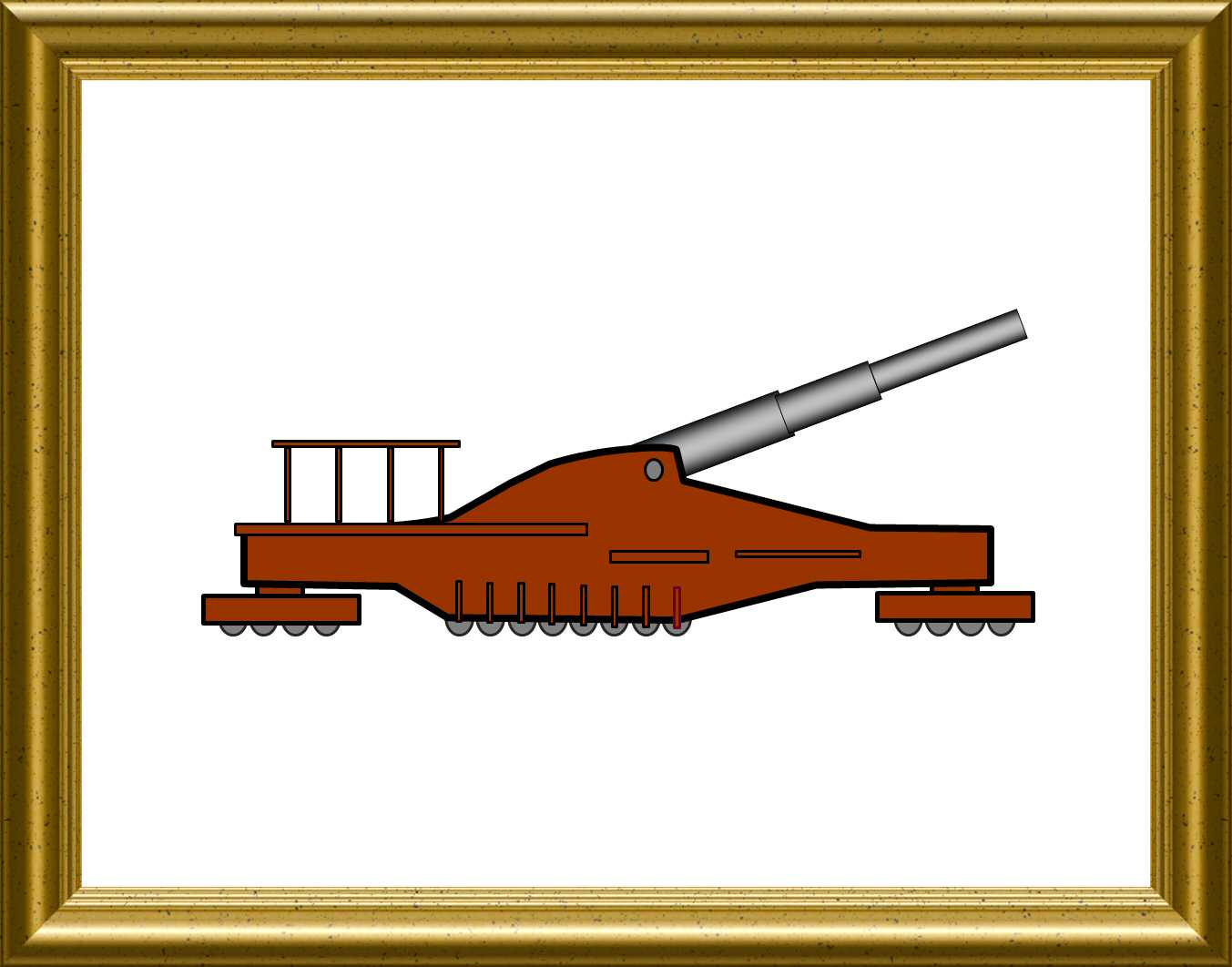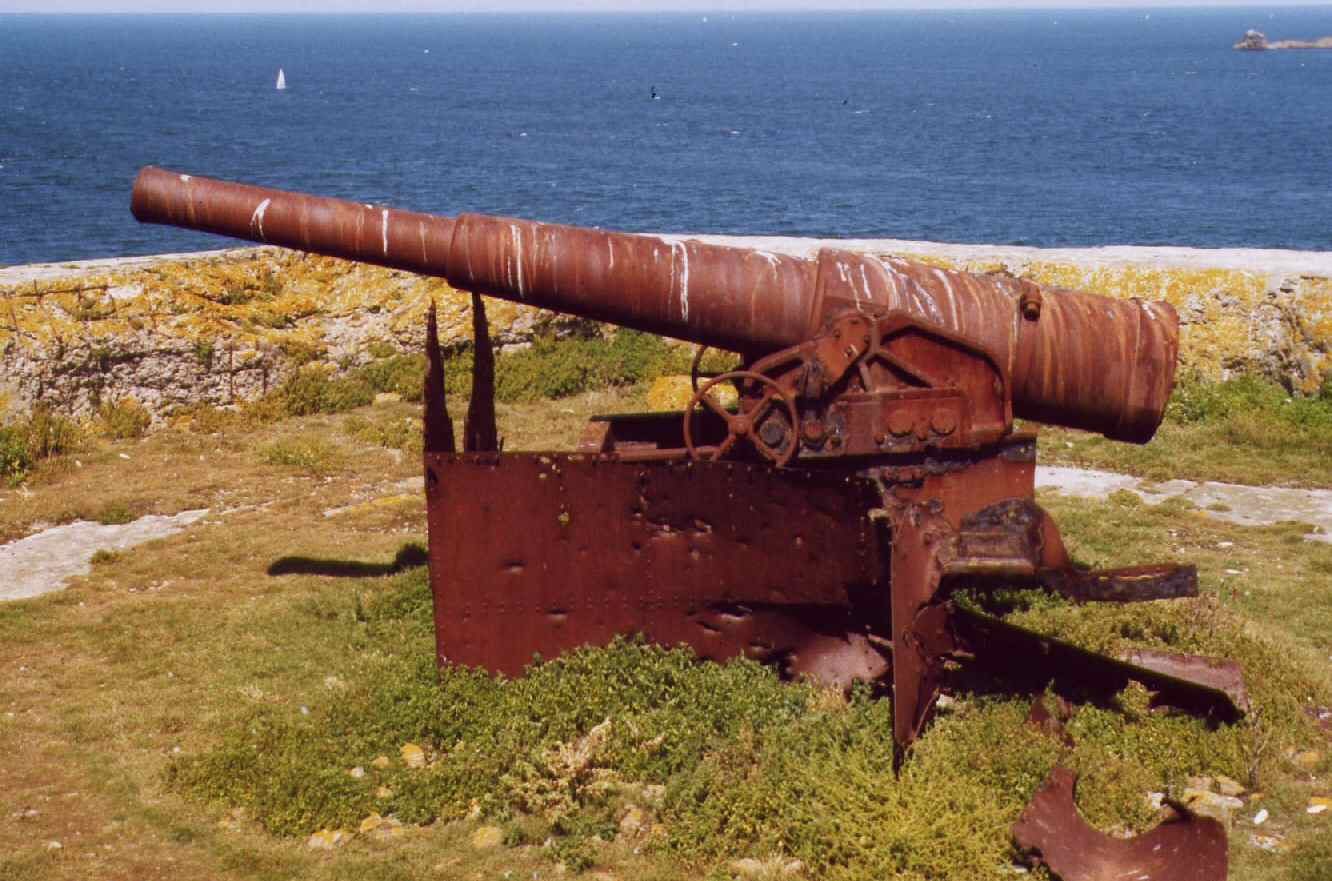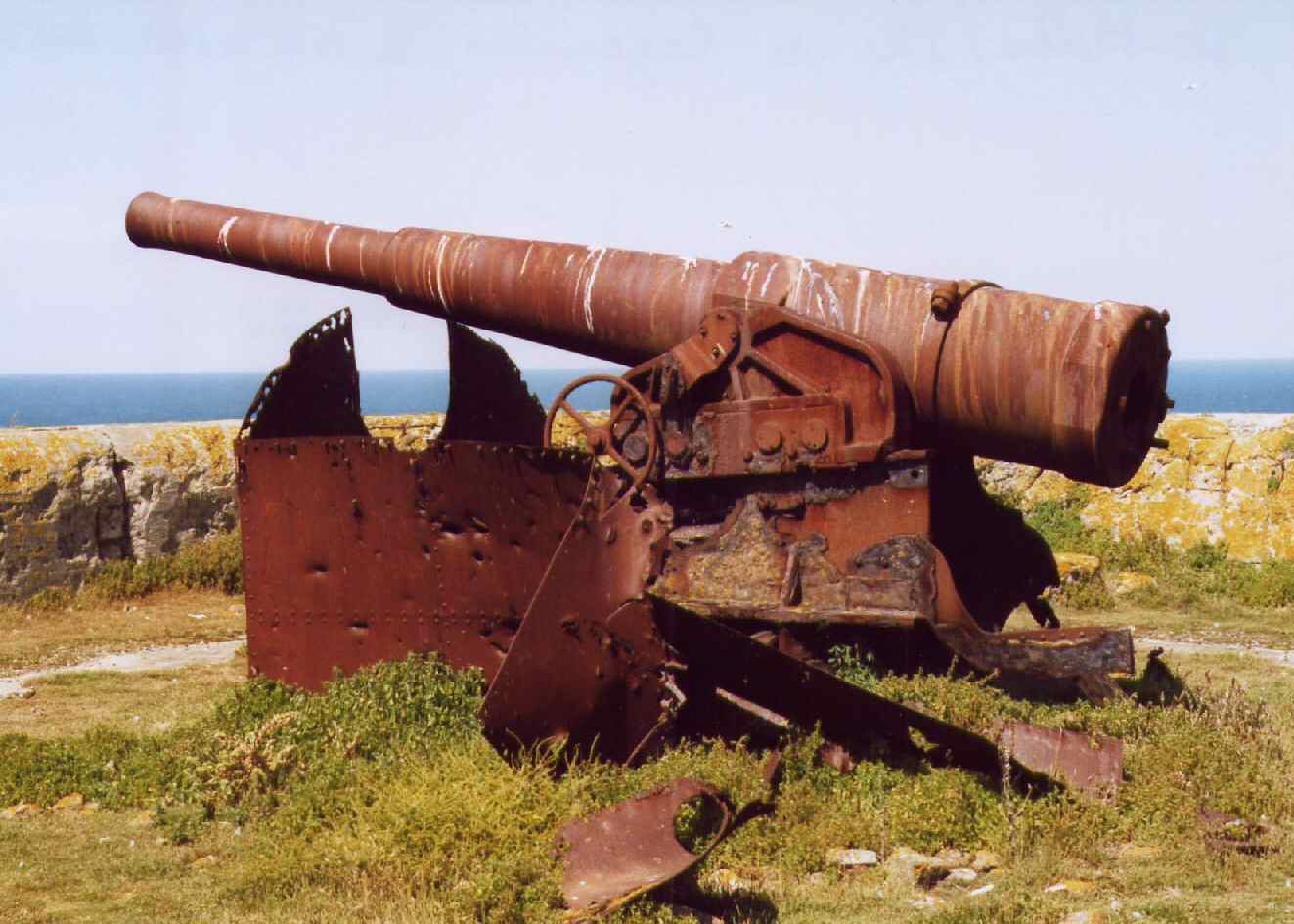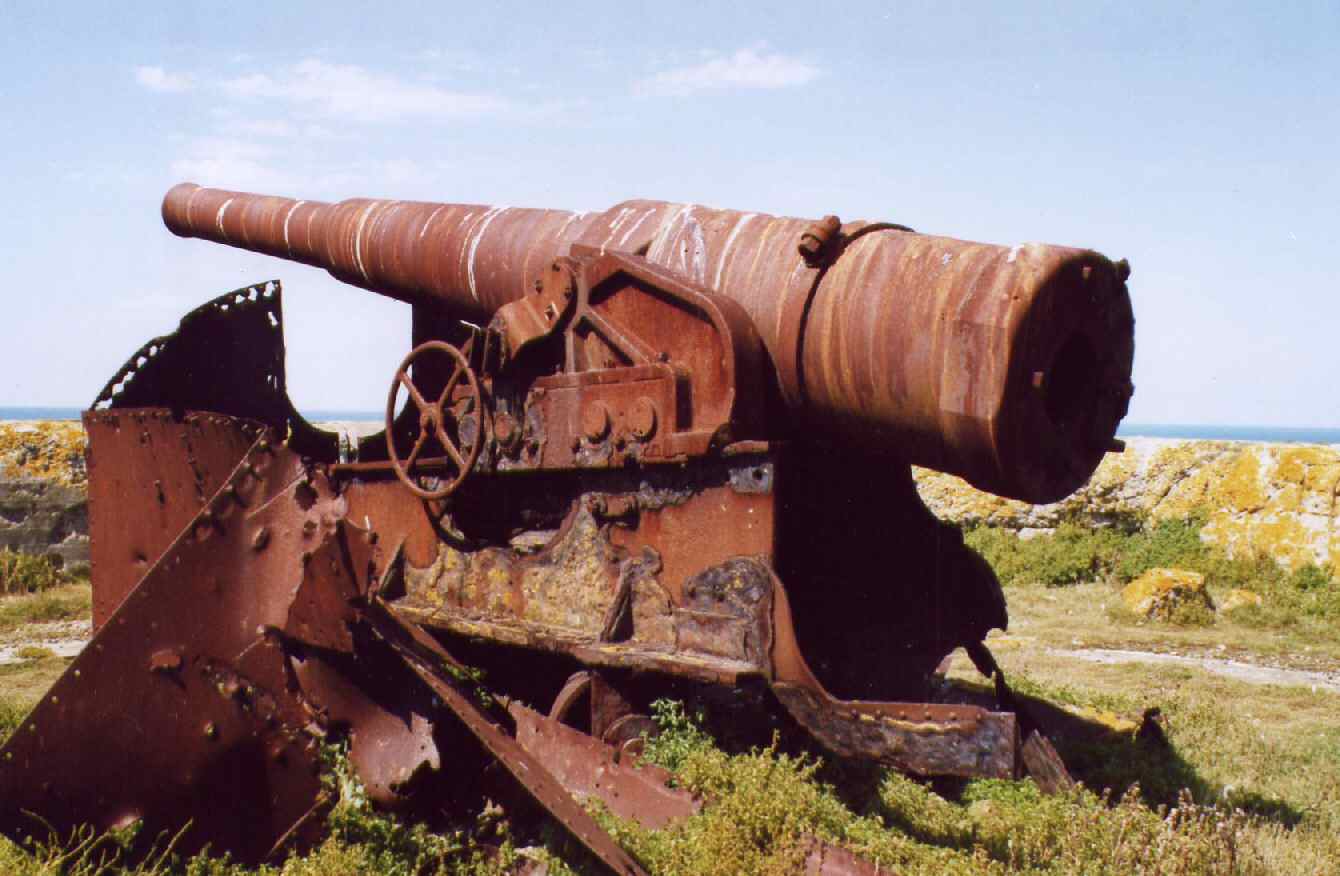|
|
|
|
|
|
|
 France
|
Canon de 19cm Mle 1870/93 sur affût TAZ Schneider |
 Heavy power artillery
|
|
|
Contributor :
|
Location :
France
Cézembre (35)
Ilôt
Coordinates :
Lat : 48.67830 / Long : -2.07000
|
General comments on this surviving gun :
Identical items in the same location :
1
Items covered by this file :
1
|
|

|

|

|
Before being used by the Gremans as a coastal defense gun, this weapon surely has been used on the Schneider wagon TAZ during WW1. It still has remnants of the turret
|
Used by Germans to fire on US troops based in St Malo in 1944. The battery had 6 such guns
|
The Ilôt de Cézembre underwent a massive navy and air bombing, before surrending on September 2, 1944
|
|
|
Historic and technical information
|
|
Denomination :
19cm Mle 1870/93
|
Origin :
 (
Fonderie de Ruelle)
(
Fonderie de Ruelle)
 (
Schneider )
(
Schneider )
|
|
Historic context :
The 'affût-truck' (railway carriage) allowing to place an artillery weapon on railway wagons had been developped before the war with the Peigné-Canet affût-truck (named by their inventors, Lieutenant Colonel Peigné and the private industry engineer Canet), but only for giving to the French fortresses some guns that might be moved on narrow-gauge 60cm railways depending on the defense location needs, and in small quantities (16 guns 155 C Mle 1881 de Bange sur affût-truck Mle 1893, and 32 guns 155 C de Bange et 120 L Mle 1878 de Bange sur affût-truck Mle 1897).
The first months of the Great War had soon convinced the French headquarters of the lack of heavy and powerful long range artillery, particularly in front of the redoubtable German 13cm long range guns, so that numerous Navy barrels had been quickly sent to the front, adapted on fix positions in the main fortresses areas, awaiting for the design and arrival of new materials. As soon as October 1914, the Squadron Leader Lucas-Giradville managed to convince the Army to bring back the affûts-trucks concept to life and adapt it to the the Navy guns in order to make that powerful artillery available on almost every place of the front line. A 'commission des affûts-trucks' was immediately created with the help of the private industry, and orders concluded in October for such materials for numerous calibres.
This is how the tube of the 'canon M de 19 cm Mle 1870/1893 de marine' was chosen among others. It was a succesful modernisation of the old coastal gun 'canon M de 19 cm Mle 1870' (originally monted on fregates), and was mounted on central or front pivot carriages to defend several war harbours.
Such available barrels were sent to the Schneider Works for mounting on affûts-trucks TAZ ('TAZ' = Tous AZimuts' = 360 degrees horizontal range) designed by the famous French company, and delivered to the front from May 1915 to 1916. The Schneider design was brilliant, with the barrel and its carriage (equipped with a hydraulic brake and a recoil recuperation system sliding on wedges) placed under a steel turret that could be aimed in direction in a full 360 degrees range, and the whole assembly placed in a steel structure placed on 4-axles wagons of the Compagnie de l'Est of the civil railway network.
This 'canon de 19cm Mle 1870-93 sur affût-truck TAZ Schneider', under a steel shielding for a good protection of the crew and the material, hence was not needing the use of specially built railways curved segments for the direction aiming. However when firing it has to be stabilized on jacks posed on the ground, and clamps fixing it to the rails. Moreover, its fire rate (1 shot each 2 minutes) was limited by the fact the gun had to return in a position aligned with the truck for reloading. The first guns participated to the big push in Champagne in September 1915.
At the beginning of WW2, the French army still aligned 24 guns of this type. The Germans used the captured guns either as heavy railway artillery or in coastal defense. This is how 3 of these guns were installes with their shielded turret on the Cezembre Island and fired on St Malo in September 1944.
One must not confuse these guns with another wxeapon of the same 19cm calibre, the '194mm type G Mle 1875-76 et 1878', with carriage and hydralulic recoil brake system. The Schneider Works were requested to mount the tubes, coastal carriage and hydraulic brakes on Mle 1916 improvised affûts-truck with a maximum of simplification. These railway trucks had the intersting property to be use-able on railway as well as on road.
|
Technical data :
- Complete description : 19cm Mle 1870/93 gun on 360° Schneider
- Design year : 1893 - 1915
- Calibre : 194.00 mm
- Weight in firing position : 65 t (including 10450 kg for the barrel and the breech only)
- Weight for transportation :
- Tube length in calibres : 30.30
- Grooves : 38 progressive angle from 0 to 7 degrees
- Projectile weight : 77 kg à 85 kg selon l'obus (7 types)
- Initial speed : 555 m/s to 675 m/s depending on the shell
- Fire rate : 1 shot / 2 minutes
- Range : 11800 m to 15400 m depending on the shell; 18300 m with special aerodynamic shell
- Elevation range : +10 / +40 degrees
- Direction range : 360 degrees range
|
Sources
|
-
Les canons de la Victoire 1914-1918 - Tome II - L' Artillerie Lourde a Grande Puissance Général Guy François Histoire et Collection 2008
-
Les Canons de la Victoire, 5ème édition du Manuel d'Artillerie Lourde, revue et considérablement augmentée Colonel Alvin Commandant André Henri Charles-Lavauzelle et Cie 1923
-
Les Materiels de l'Armee Francaise 1940 (Tome 2) Stéphane Ferrard Charles Lavauzelle 1984
|
|